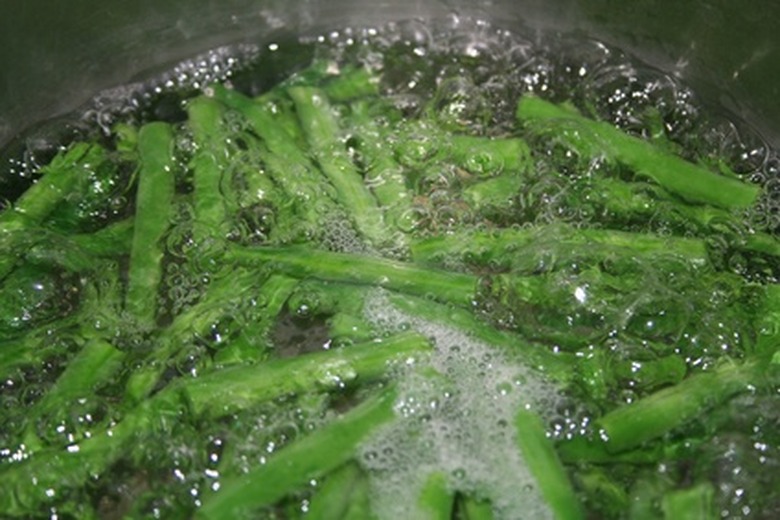How To Cook Fresh Pole Beans
If you ever wondered why Jack's magical beans grew so tall in "Jack and the Beanstalk," you probably have never seen pole beans. These vigorous climbers twine around poles or other supports and grow to heights of 6 feet or more. Slender green beans are nearly twice the size of bush beans and bursting with flavor. Picked when they are young, pole beans make a nutritious snack straight from the vine or can be cooked and served as side dish.
Step 1
Harvest pole beans when pods are plump but before the skin begins to toughen. Tiny beans should be barely visible through the pod.
Step 2
Wash beans in cold running water to remove any dirt or insects.
- If you ever wondered why Jack's magical beans grew so tall in "Jack and the Beanstalk," you probably have never seen pole beans.
- Slender green beans are nearly twice the size of bush beans and bursting with flavor.
Step 3
Trim both ends with a knife or snap by hand. Fresh beans snap easily. Cut or snap into the desired size. Small, tender beans are typically cooked whole, while larger, more mature beans are cut into 2-inch sections.
Step 4
Pour an inch or two of water into a saucepan, and bring to a rapid boil. Drop beans into the water, and return to a full boil. Reduce heat to simmer.
- Trim both ends with a knife or snap by hand.
- Drop beans into the water, and return to a full boil.
Step 5
Simmer for 4 to 5 minutes until beans are fork-tender. Check beans at 2 minutes, as cooking time varies depending on the texture of the bean.
Step 6
Serve hot with a pat of butter.
Pole Beans With No Flowers And No Beans
If the air temperature is too low or high, pole beans may not produce blossoms, or if they do, they might fall off or become infertile. When evening temperatures fall below 55 degrees Fahrenheit, the flowers may fall off the plant. Preferring a loamy, well-draining soil, beans usually do not require extra nutrition. Fertilizing your soil with a high-nitrogen fertilizer, especially before bean pods have begun growing, can lead to no flowers or beans. If your soil is deficient and the beans have already been planted, use compost, compost tea or an even-ratio fertilizer (10-10-10). Aged compost has the nutritional equivalent of an even fertilizer. Young bean plants have a delicate root structure, which means that pole beans do not do well when transplanted and may not survive or adapt well to a changed growing environment.
- Simmer for 4 to 5 minutes until beans are fork-tender.
- If the air temperature is too low or high, pole beans may not produce blossoms, or if they do, they might fall off or become infertile.
Tip
Cook with the least amount of water possible to preserve flavor. Use pole beans in any recipe calling for green beans, but increase cooking time, as pole beans require slightly longer to cook than bush beans. Pole beans can be steamed or cooked in the microwave.
